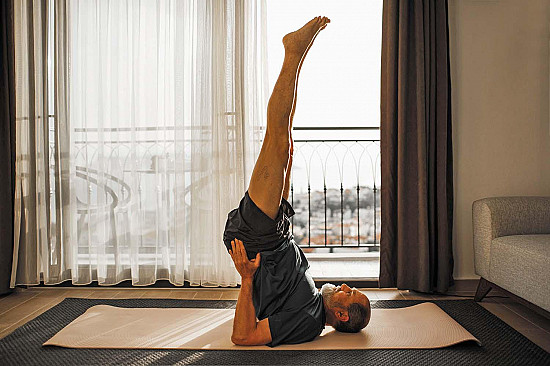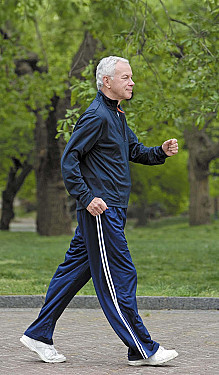Exercise and your arteries
More than 300 years ago, the great English physician Thomas Sydenham observed, "A man is as old as his arteries." It's as true today as it was then. And in a 21st-century update on 17th-century wisdom, we might add that your health is only as good as your arteries, since these blood vessels carry vital oxygen-rich blood to all your body's tissues.
Today we also know that regular exercise is one of the best ways to maintain artery health.
Your arteries
Doctors used to think of arteries as passive conduits for blood, working for your body the way a garden hose works for your lawn. Wrong! In fact, arteries are complex structures with crucial regulatory functions, and they are in the front line of the battle for cardiovascular health.
Every artery has three layers in its wall. The inner layer, or intima, is composed of a thin layer of endothelial cells that are in direct contact with the bloodstream. The middle layer, or media, is composed chiefly of smooth muscle cells and elastic fibers. The outermost layer, or adventitia, is made up of supporting tissues that are dense and strong in larger arteries but nearly absent in the delicate blood vessels of the brain.
Endothelial cells have a crucial role in vascular health, and exercise has an important effect on endothelial cells. If all the endothelial cells in your body were placed side by side, they would cover a football field; together, they weigh more than three pounds.
Among other things, endothelial cells produce a molecule called nitric oxide. Nitric oxide has two crucial functions. It keeps the arterial lining smooth and slippery, preventing white blood cells and platelets from latching on and causing damaging inflammation and artery-blocking blood clots. In addition, it relaxes the smooth muscle cells of the artery wall's middle layer, preventing spasms and keeping arteries open.
Movement improves artery health
Exercising muscles need more blood. And in response to regular exercise, they actually grow more blood vessels by expanding the network of capillaries. In turn, muscle cells boost levels of the enzymes that allow them to use oxygen to generate energy. More oxygen-rich blood and more efficient metabolism: It's the formula that explains why people who exercise regularly enhance their endurance and strength.
To find out if exercise can affect arterial aging, scientists in Italy studied four groups of healthy people: young exercisers, young non-exercisers, elderly exercisers, and elderly non-exercisers. Comparing sedentary youths with sedentary senior citizens, they found that age took a substantial toll on endothelial function and nitric oxide production. But in people who exercised regularly, age had a much smaller effect; endothelial function still declined over the years, but there was a much smaller and more gradual drop in nitric oxide production. Indeed, exercise helped keep arteries young.
The Italian researchers studied people who biked, ran, or swam at very high levels. But you don't have to be a triathlete to help your arteries stay young; just 2–3 miles of brisk walking nearly every day is a giant step in the right direction.
And it's never too late to start. Scientists from the University of Colorado enrolled 20 sedentary men with an average age of 53 in an exercise program that consisted primarily of walking. At the end of three months, the men had improved their endothelial function so much that they achieved results similar to those of middle-aged and older men who had exercised for years. True, the Colorado volunteers were all healthy, but similar studies of patients with coronary artery disease have demonstrated that exercise can produce important gains in endothelial function, even in people who already have atherosclerosis.
Disclaimer:
As a service to our readers, Harvard Health Publishing provides access to our library of archived content. Please note the date of last review or update on all articles.
No content on this site, regardless of date, should ever be used as a substitute for direct medical advice from your doctor or other qualified clinician.















